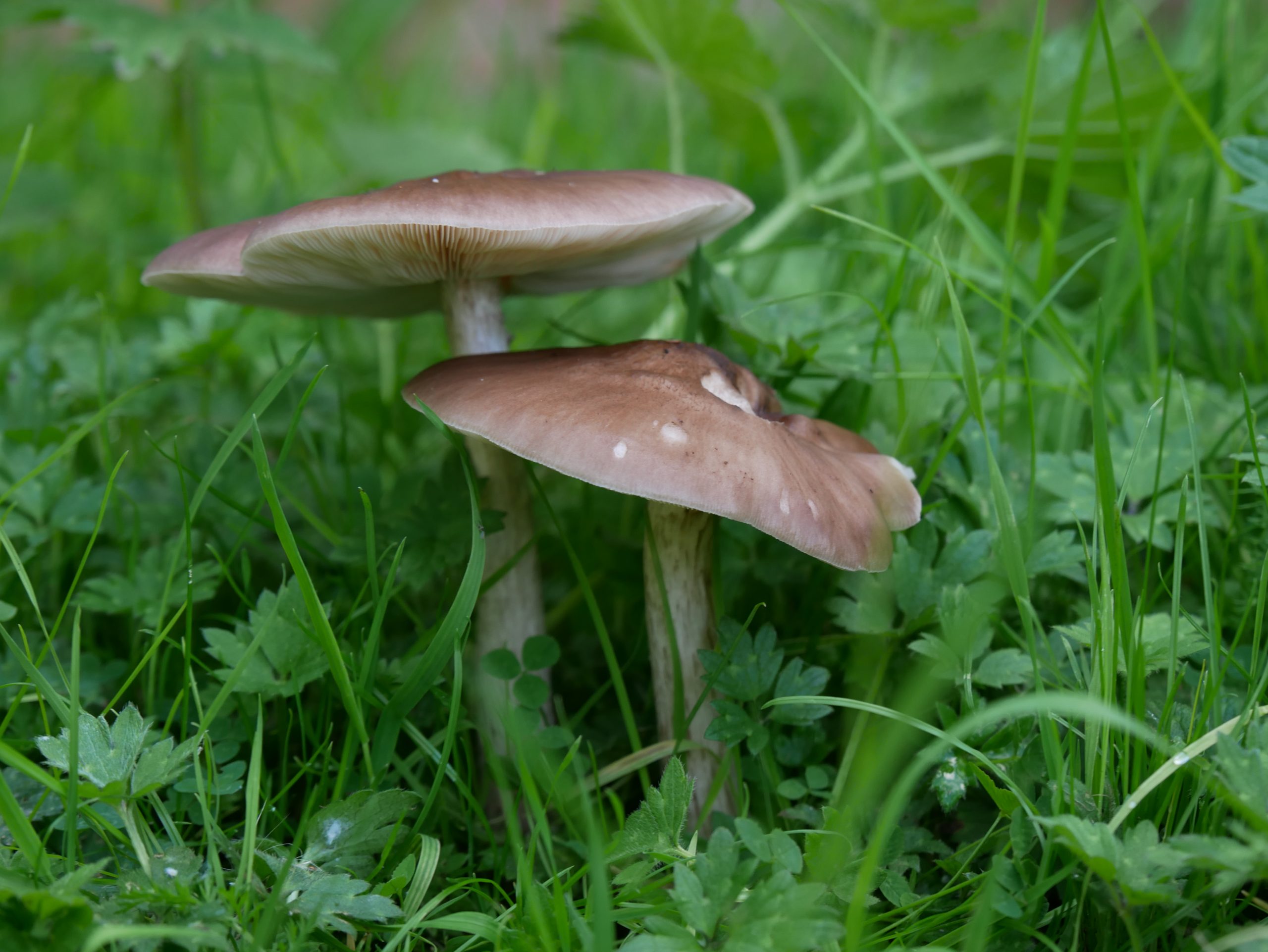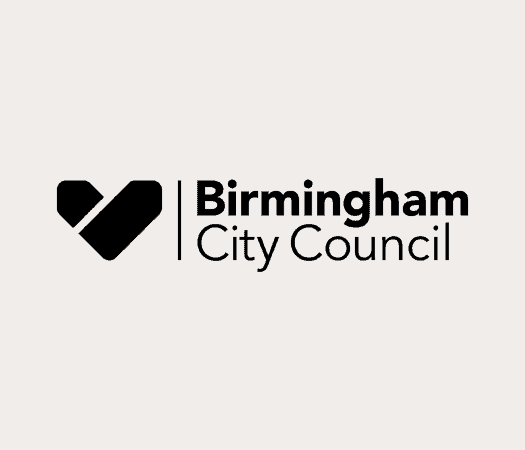Watch this video to learn more about the important role of fungi in our ecosystems:

Suggested Activities
In the classroom
Fungi have mycelium below the ground, and the mushrooms are their fruiting body that they use to make spores. Find your way through the mycelium maze and the connect the dots to finish drawing the mushroom. You can also colour your mushroom in!
Spore printing
This can be done with any mushrooms with gills and is a good activity to do using ones you buy from the supermarket.
If you get stuck, you can watch this video to find out how (tutorial starts at 3 min 41 secs):
In the cemeteries
You can go fungi hunting in the cemeteries. Here are some photos and videos of mushrooms we have found over the last two years as examples of things you might find. Look close to trees (many mushrooms have a symbiotic relationship with certain tree species), on tree stumps and in damp areas. Don’t forget that many mushrooms are poisonous and all of them might absorb lead and other pollution from the soil so you should never eat any that you find in the cemetery and should wash your hands thoroughly after touching them.
Keep a record of the mushrooms you find – take pictures to help you identify them.You can be citizen scientists and upload your records to the iNaturalist app, or EcoRecord website to help build a picture of the wildlife living in your area.
Fungi
Yellow Stainer - Agaricus xanthodermus
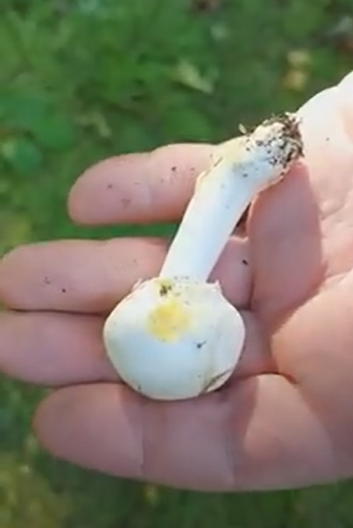
Looks very similar to edible field mushrooms but discolours yellow when cut or bruised and has a strong odour – eating them by mistake gives people an upset tummy.
Stump Puffball - Lycoperdon pyriforme
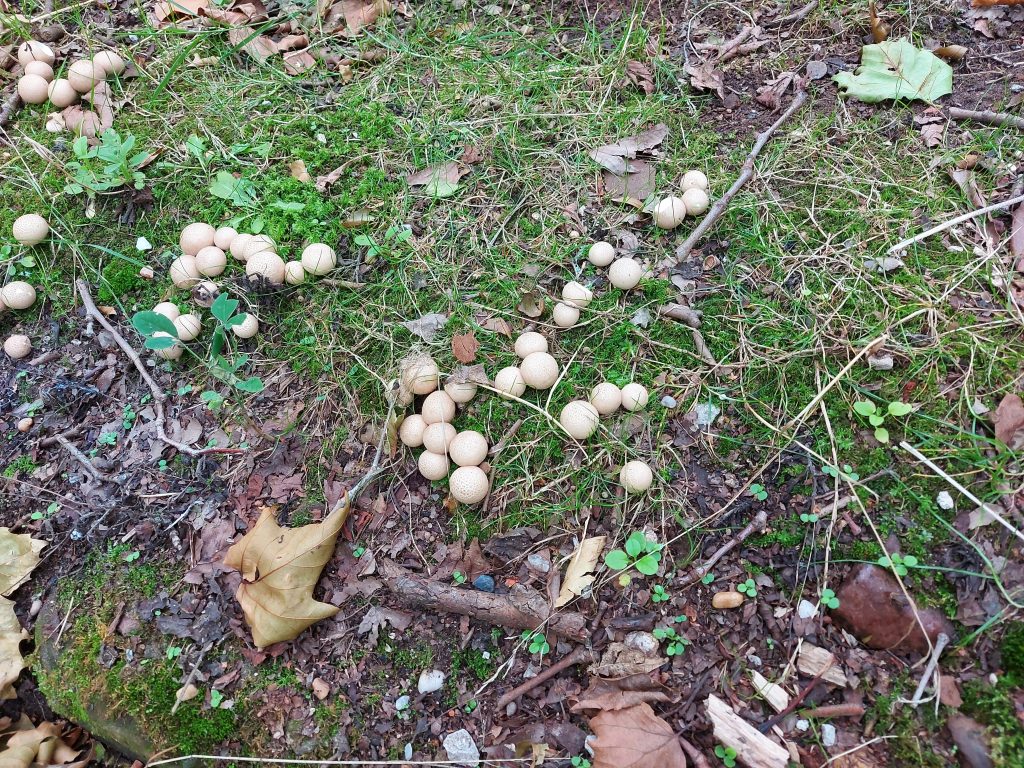
These little round mushrooms have a brown powdery finish and are always found near tree stumps or where there are roots beneath the ground.
Mosaic Puffball - Lycoperdon utriforme
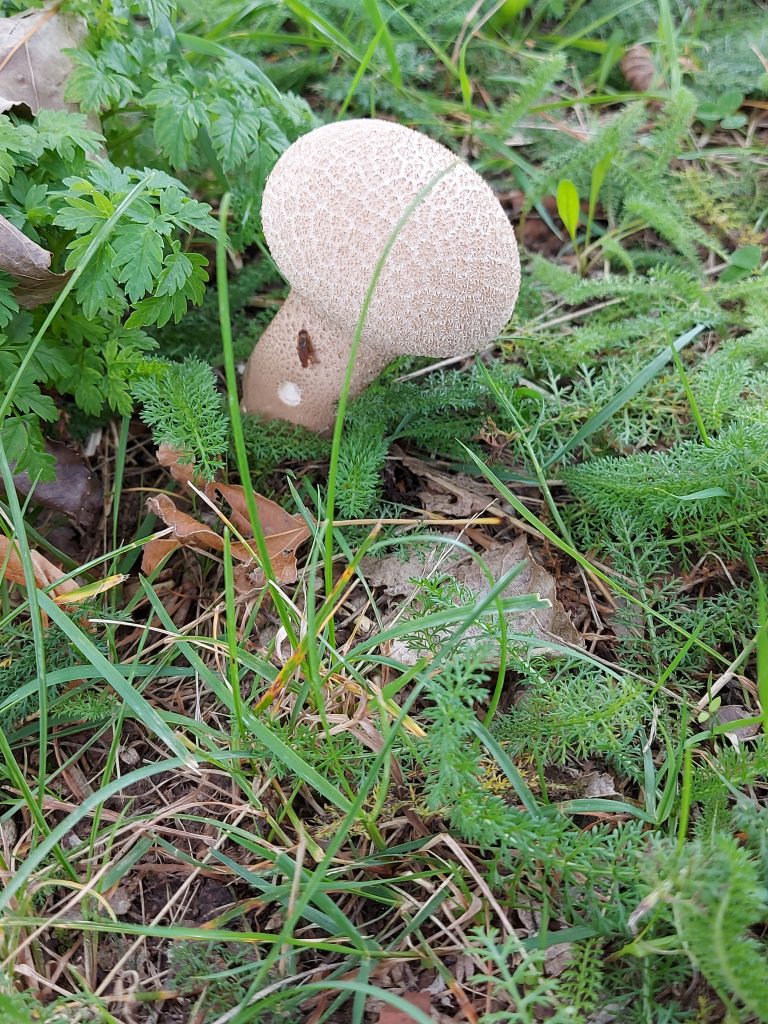
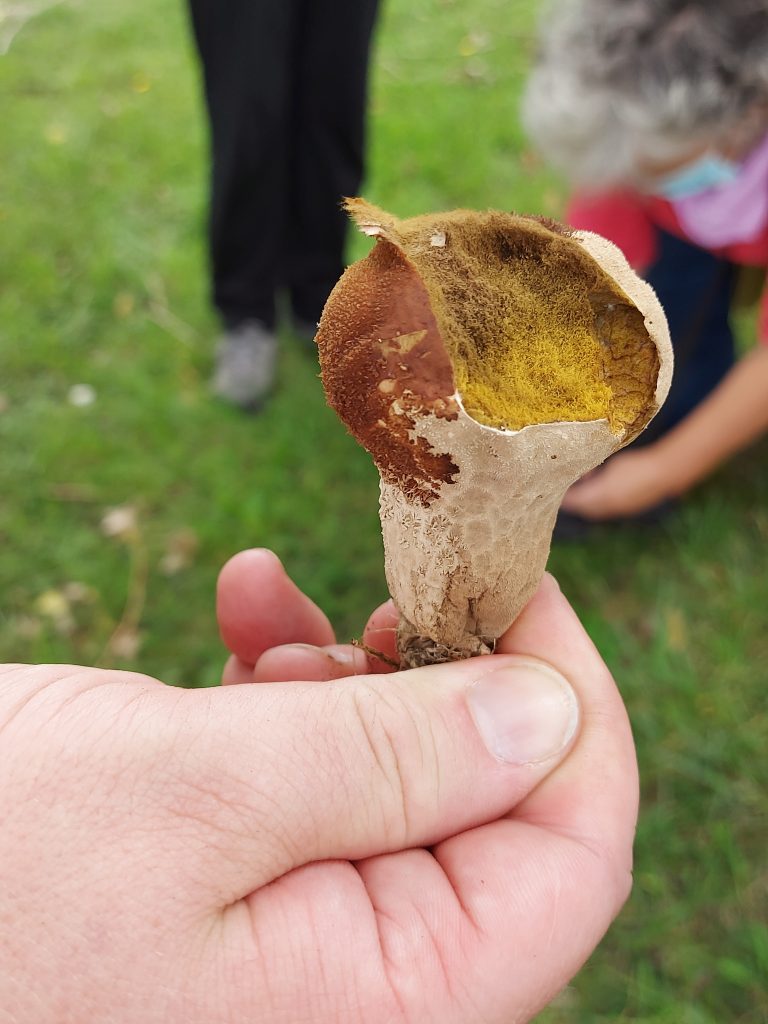
This mushroom has a round cap, covered in scales which look like a tile mosaic and is very spongy inside. Mosaic puffballs are quite rare in Britain but can be found on the edge of woodland and in unimproved grassland, so the cemeteries are a good habitat for it.
Shaggy Inkcap - Coprinus comatus

The shaggy inkcap start as tall and narrow with an almost cylindrical cap. The name comes from the ‘shaggy’ or ‘scaly appearance of this white cap. The cap gradually opens out to a bell shape. The gills turn black and the mushroom dissolves from the margin of the cap until it is almost entirely gone, making an ‘inky’ black residue. It is widespread and common on roadside verges, parkland, grassland and gardens, growing in small groups. These were photographed in front of the post office on Vyse Street but they are also common in Warstone Lane and Key Hill Cemeteries.
Rollrims – Paxillus

The edge of the cap has a rim which rolls under, hence the name. Roll rims are very common and found throughout the UK, often in woodlands, parks and gardens. Mushrooms in this family are deadly poisonous – if you eat them, they cause an autoimmune reaction that results in your body destroying its red blood cells. This can be fatal.
Inkstain Bolete - Cyanoboletus pulverulentus
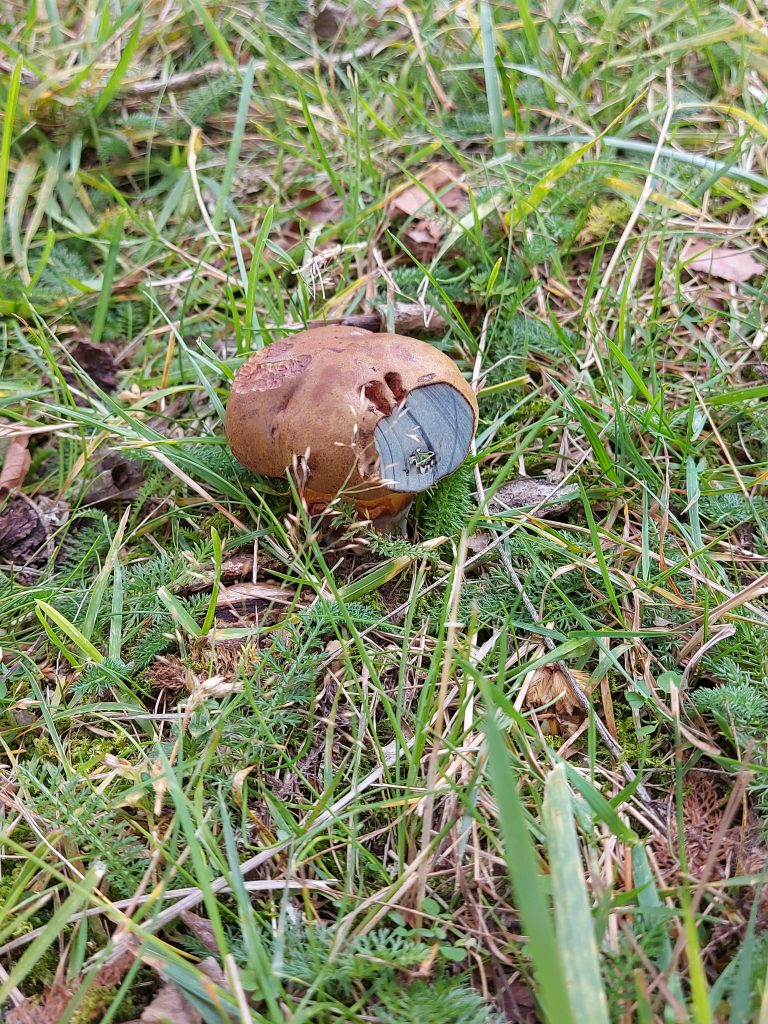
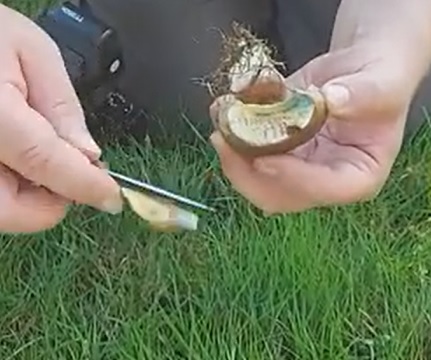
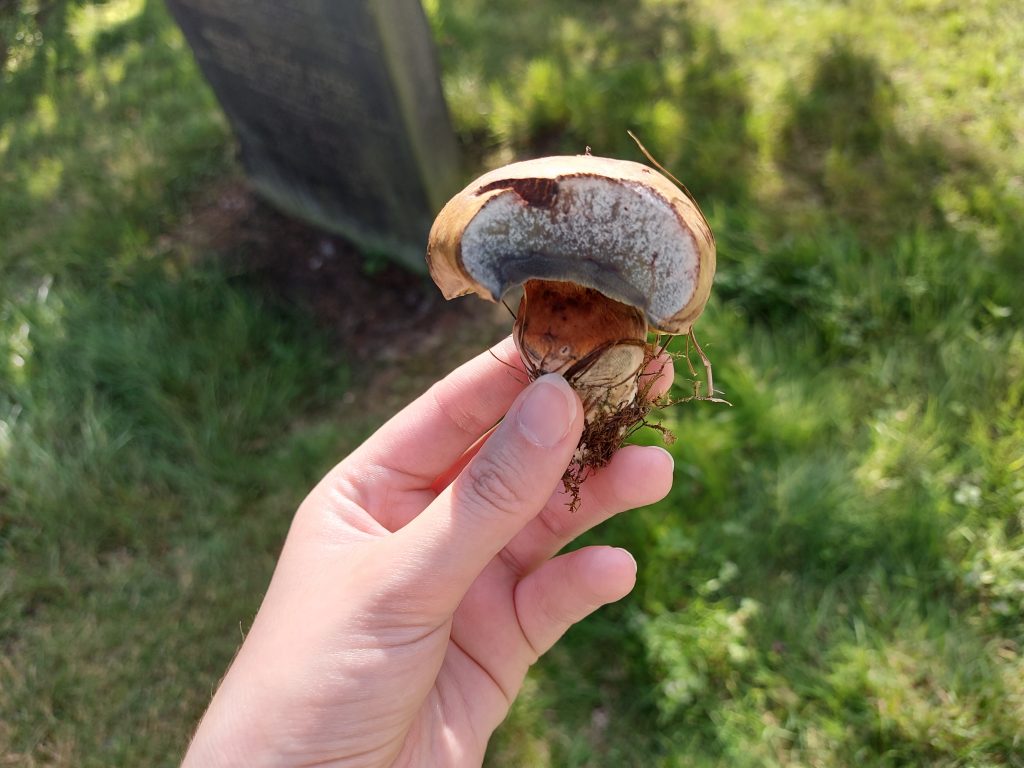
Boletes are a family of mushrooms which have pores instead of gills underneath the cap. On an inkstain bolete the pores and interior are lemon yellow but immediately stain blue/dark when cut or bruised, then quickly fading to grey. It grows near trees, especially oak and beech and is common in Warstone Lane Cemetery.
Onion Earthball - Scleroderma cepa
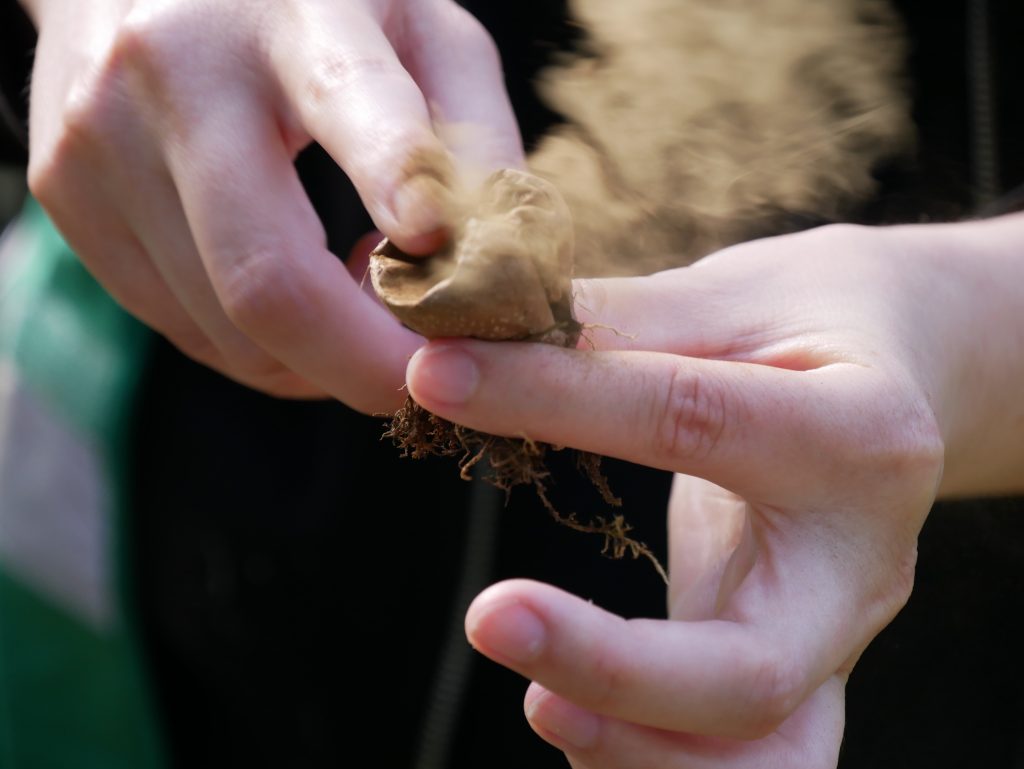
Earthball mushrooms are round, and as they age the spores inside turn dark. They rupture and explode when touched to spread the spores, allowing them to be dispersed by wind and rain.
Mushrooms in this family are poisonous, so extra care must be taken after touching them!
Giant Polypore - Meripilus giganteus
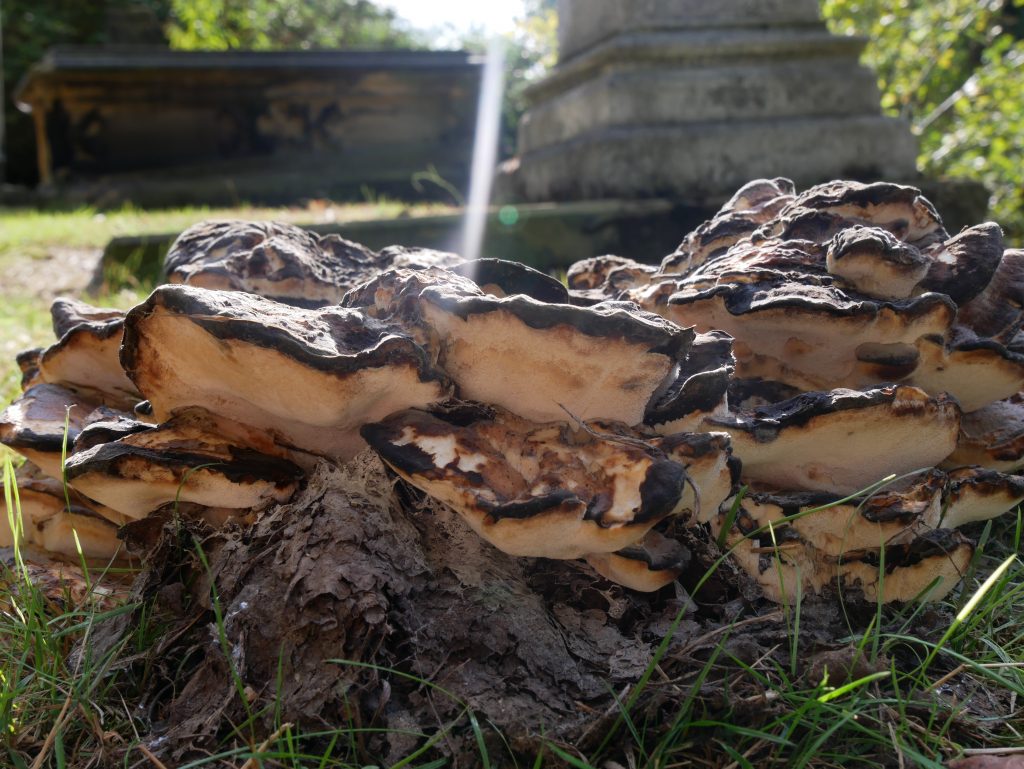
Large clumps of fan shaped mushrooms around the base of trees or on roots or stumps. Initially brown but turns black when bruised or decaying. Commonly found with beech trees and is a sign that the tap root or other roots have died, allowing the fungus to infect them.
Deer Shield - Pluteus cervinus

Found on logs, roots and tree stumps. Deer shield mushrooms are quite variable in colour from light ochre-brown to dark brown, and the gills are pinkish green.
Trametes versicolor – Turkeytail
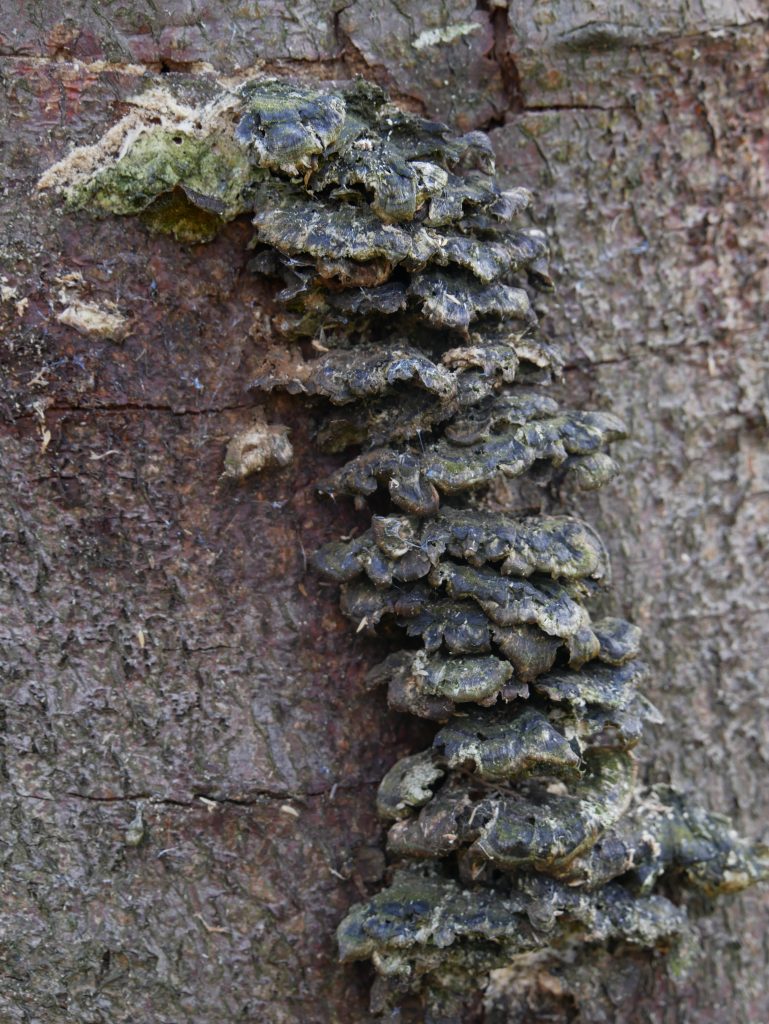
The latin name refers to the multicoloured nature of this bracken fungus, the colours are said to be similar to the tail of a wild turkey. This fungus grows on dead logs and tree stumps in stacked layers.
